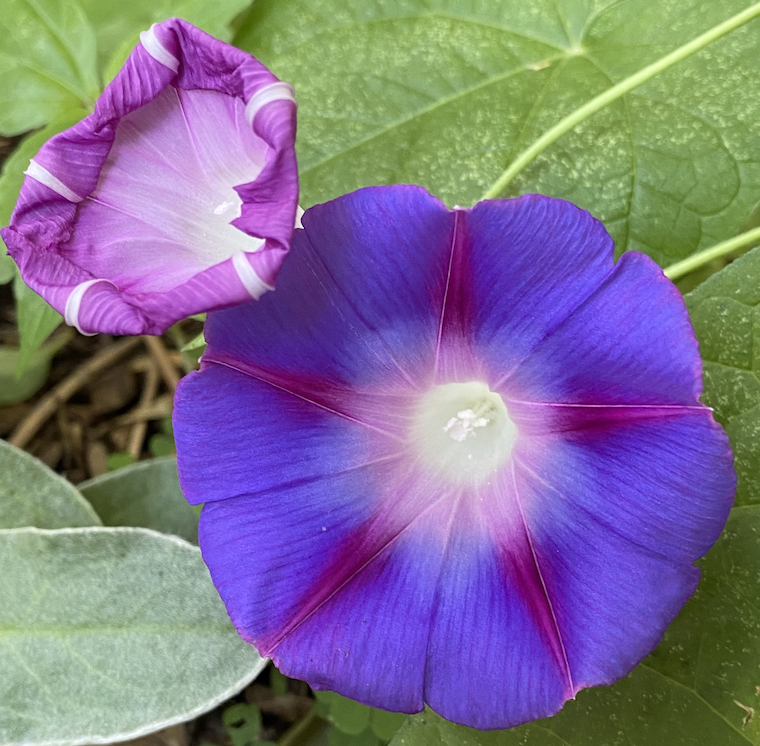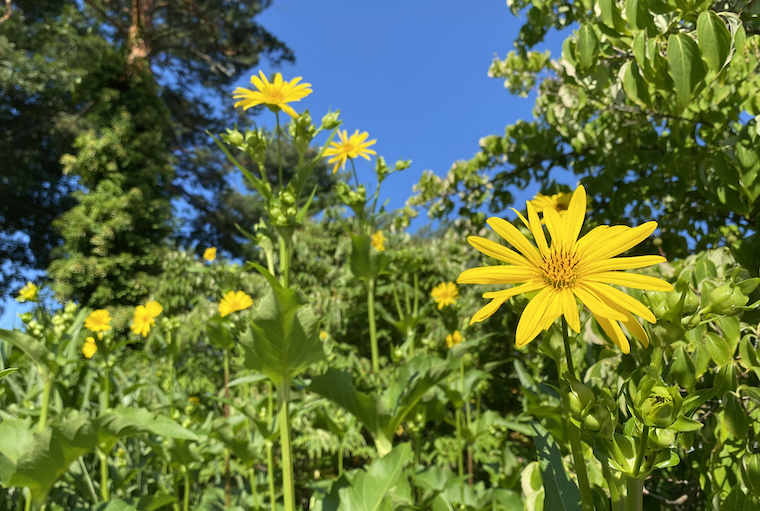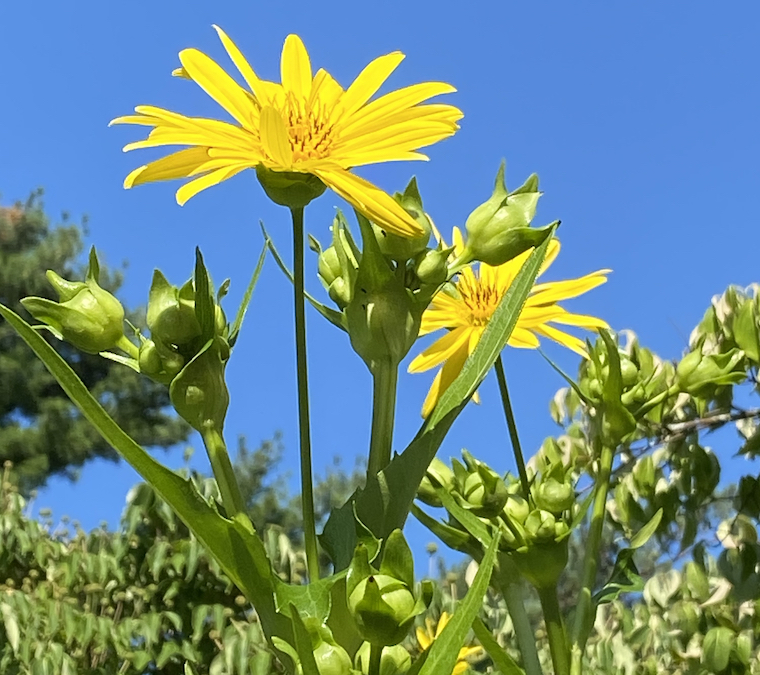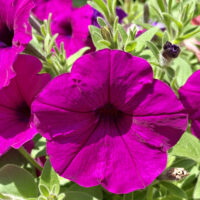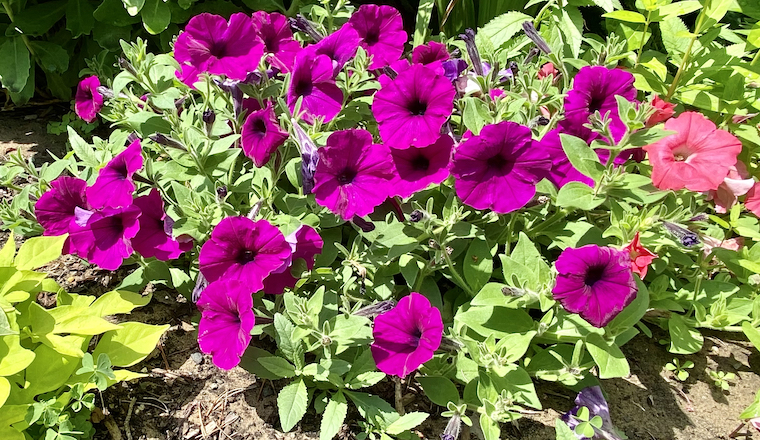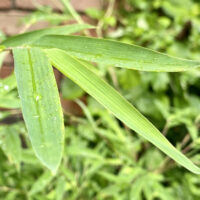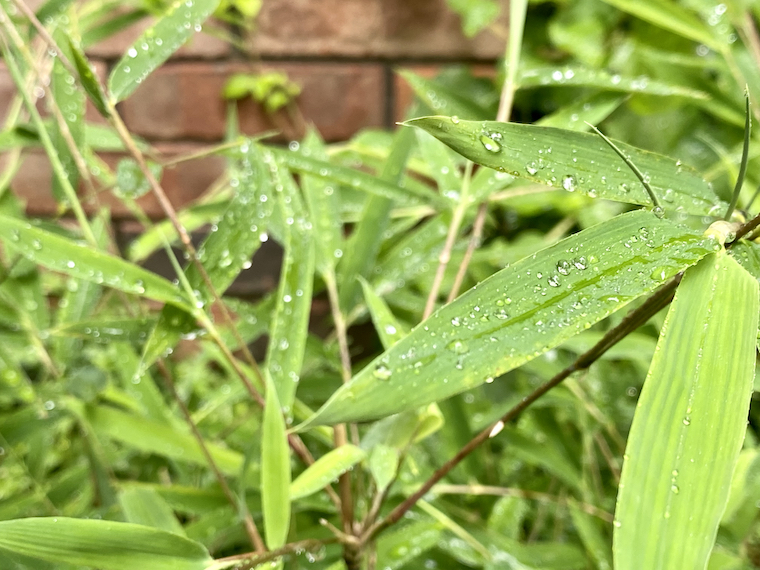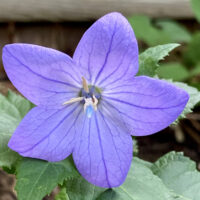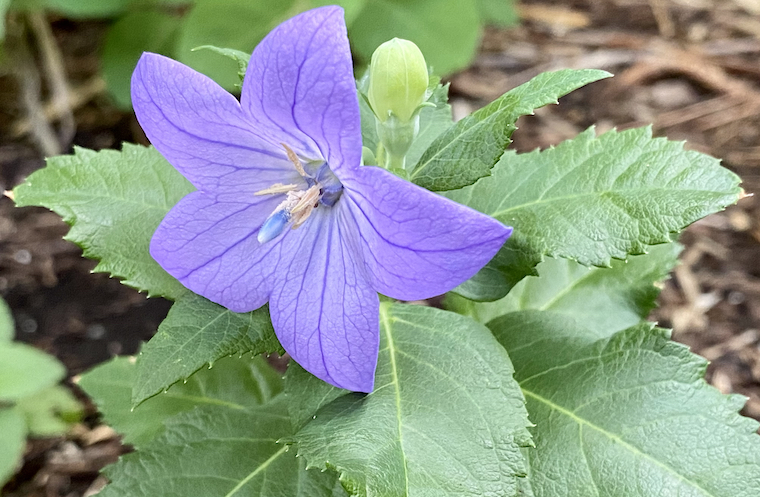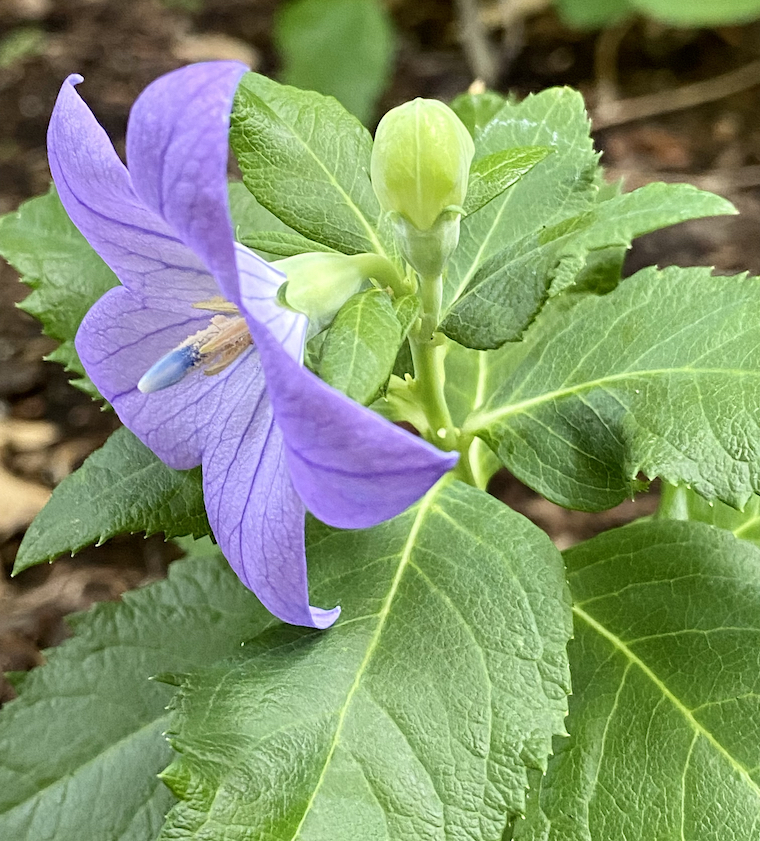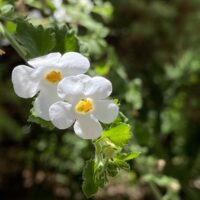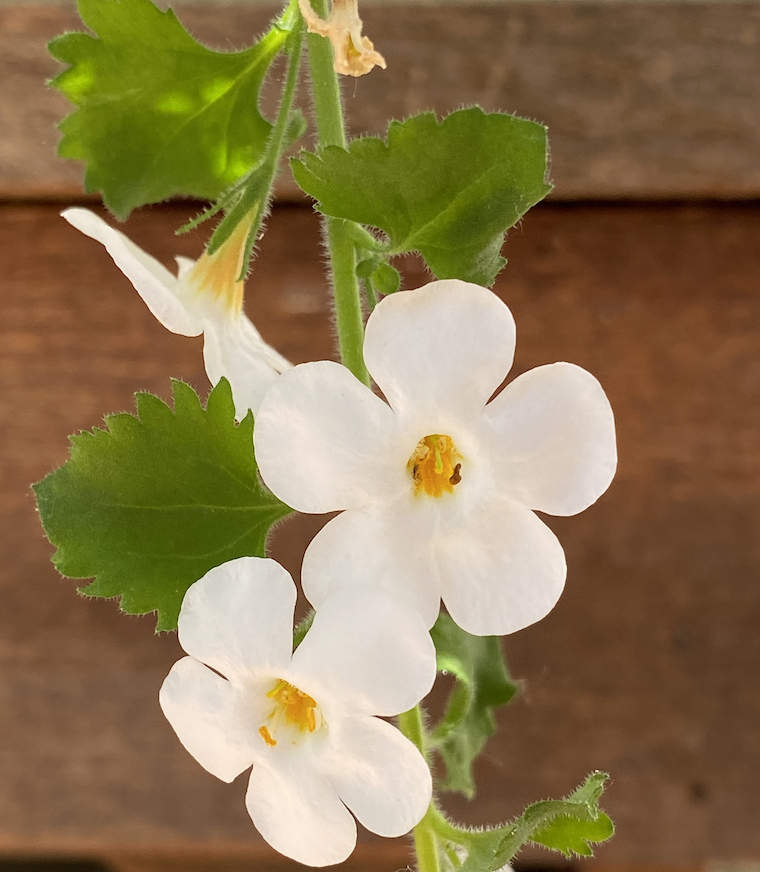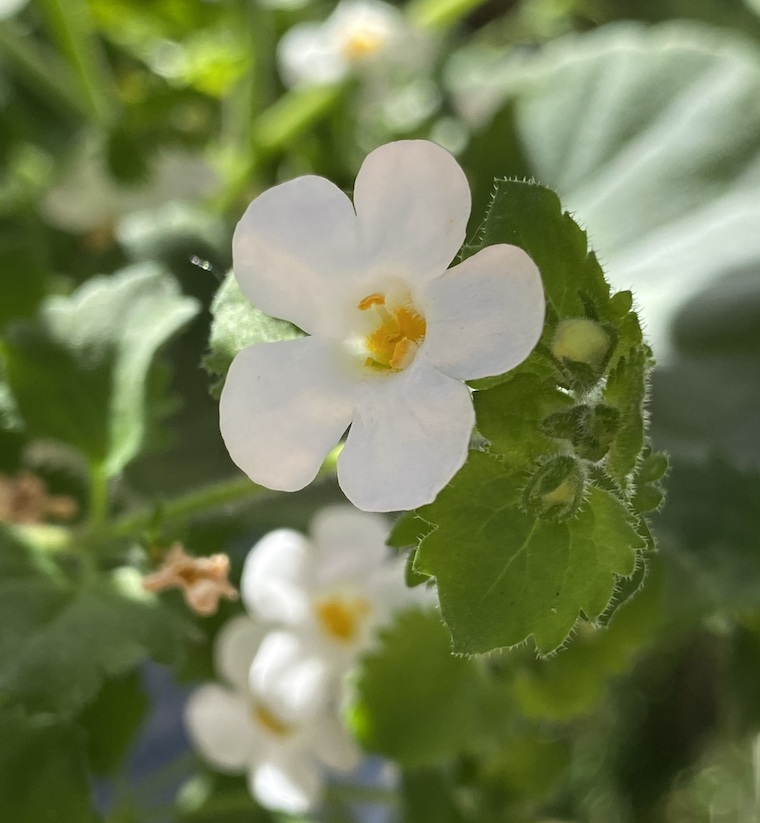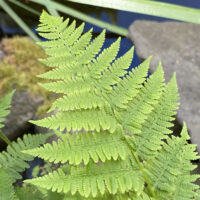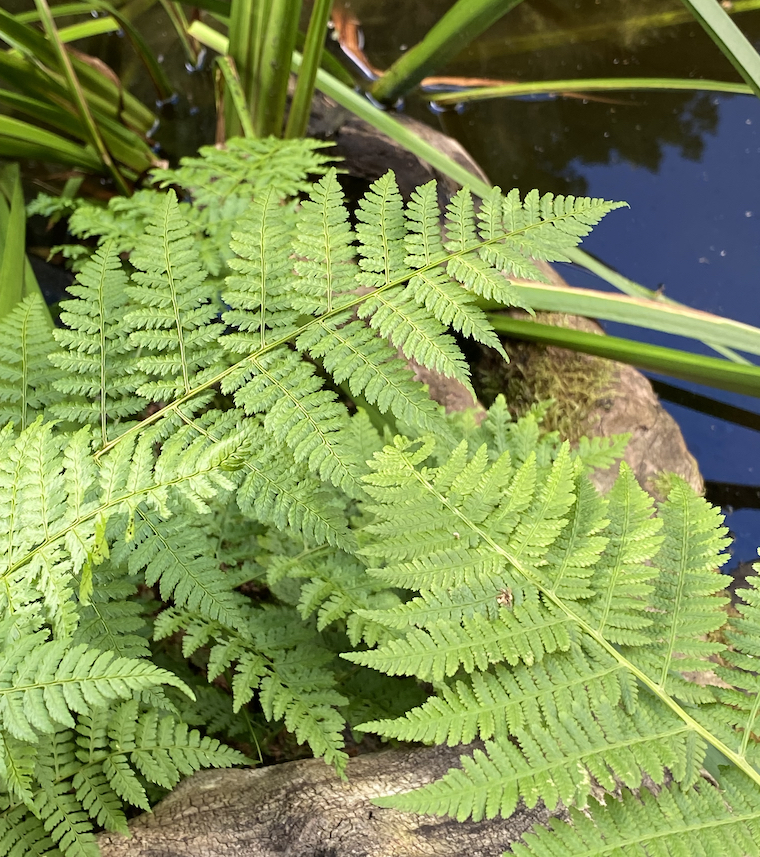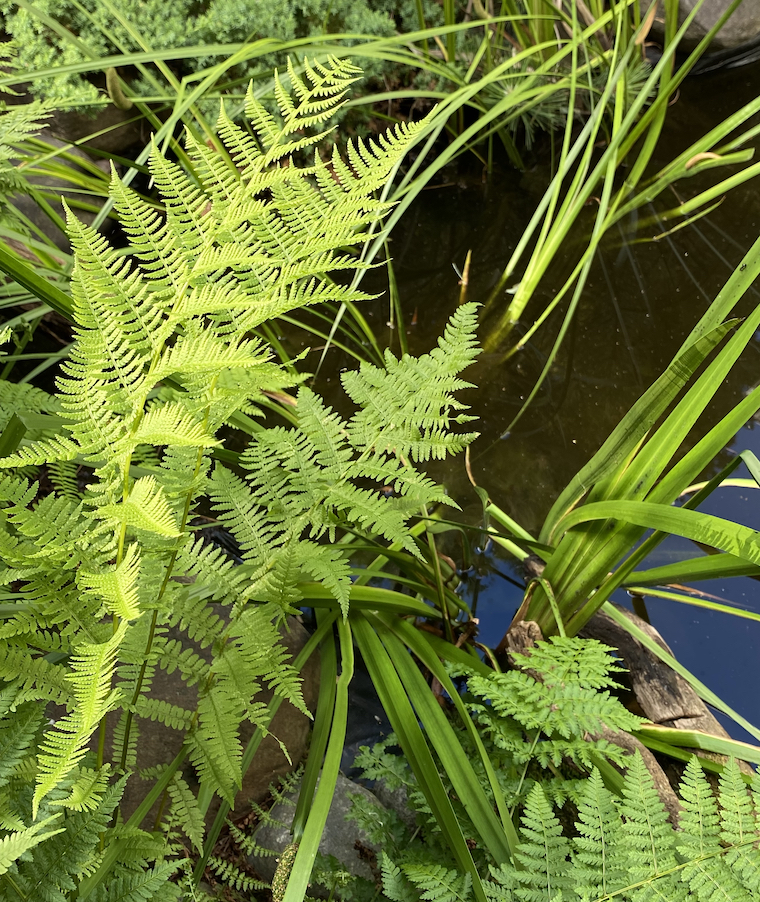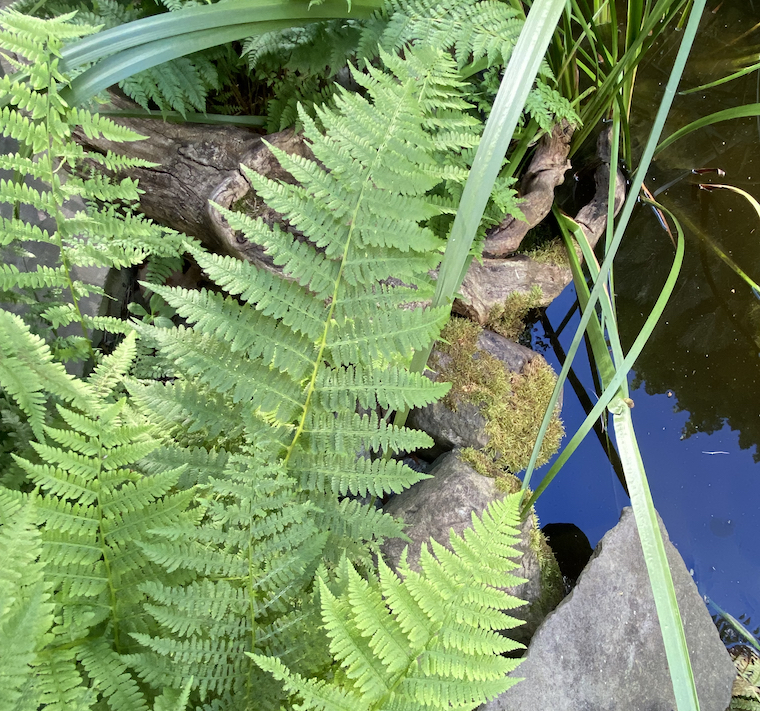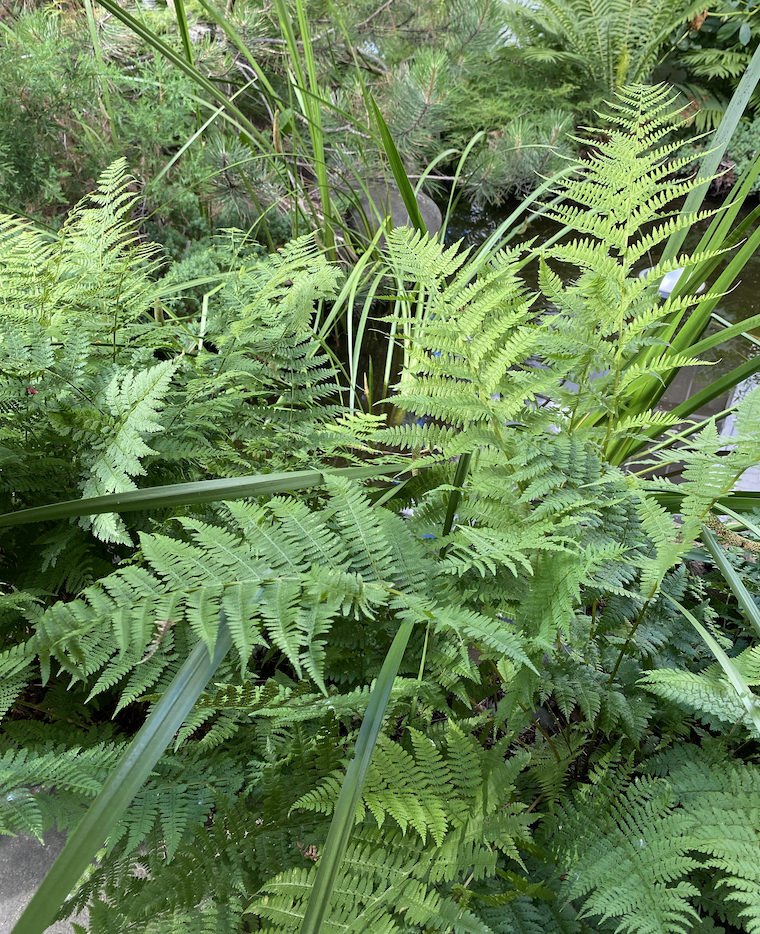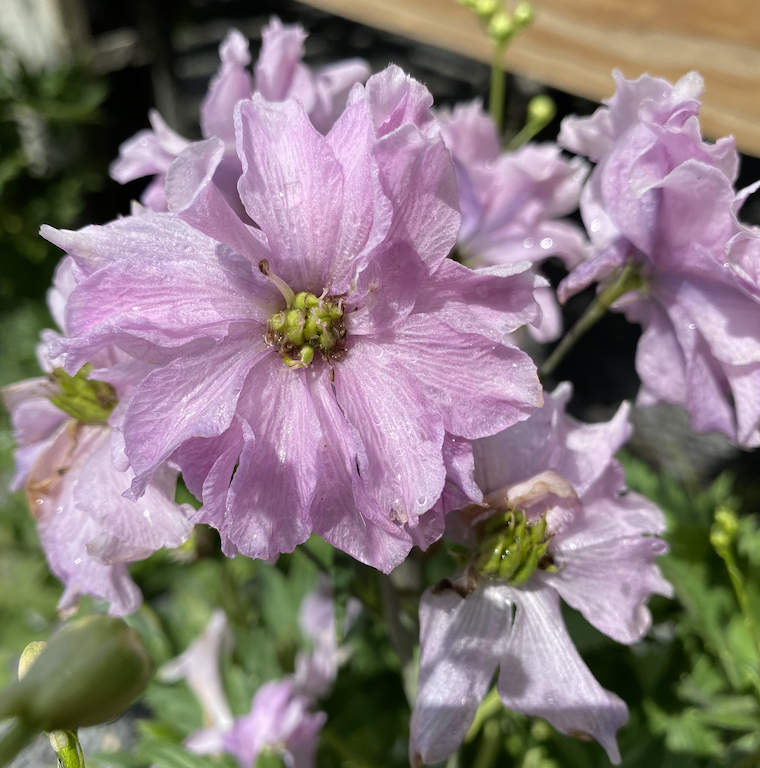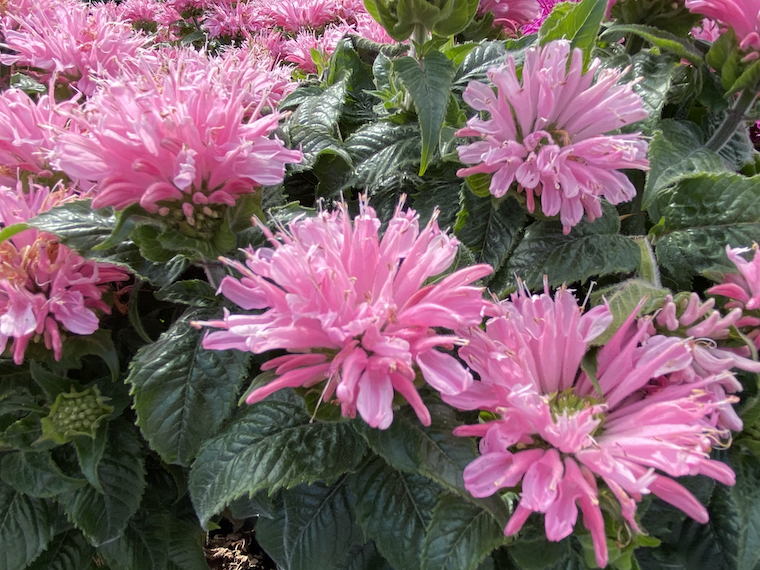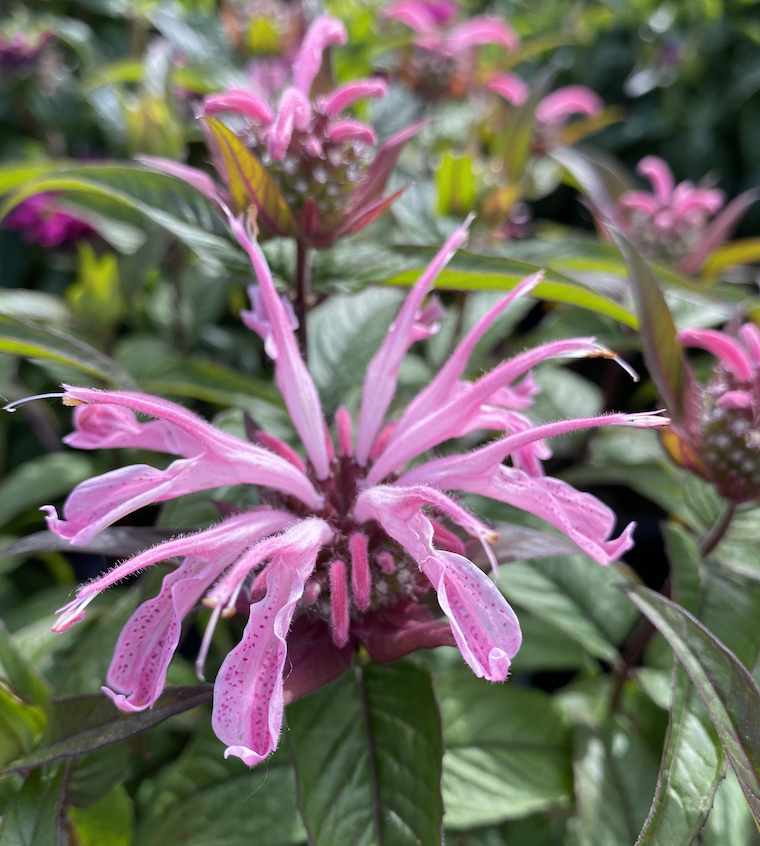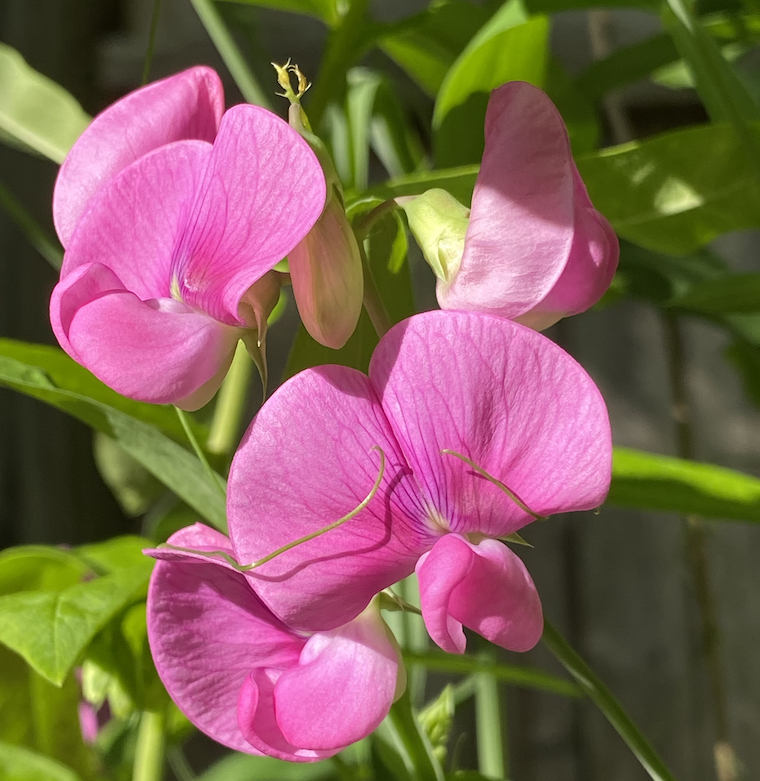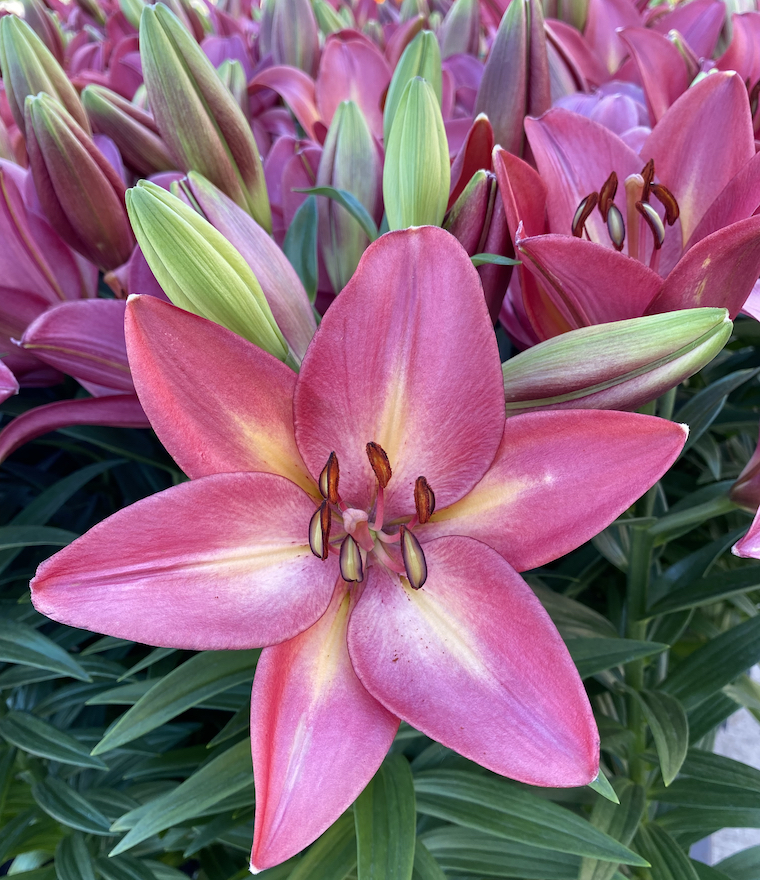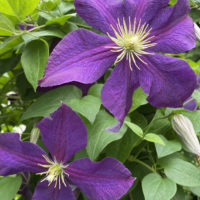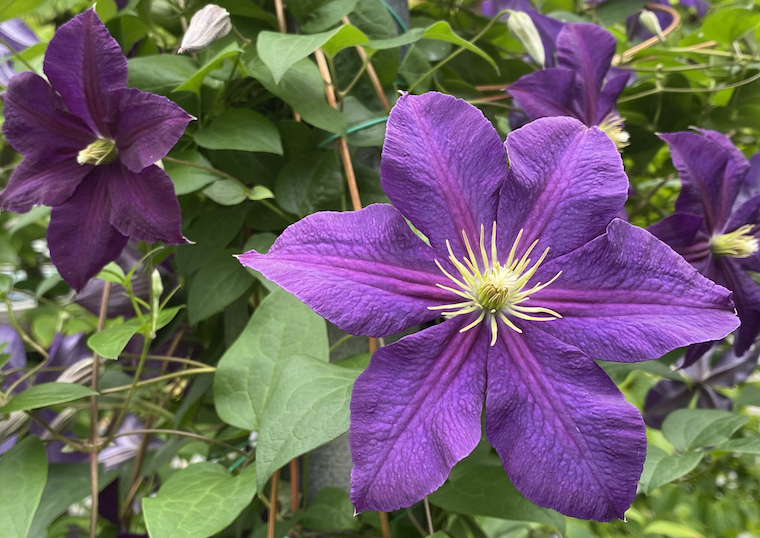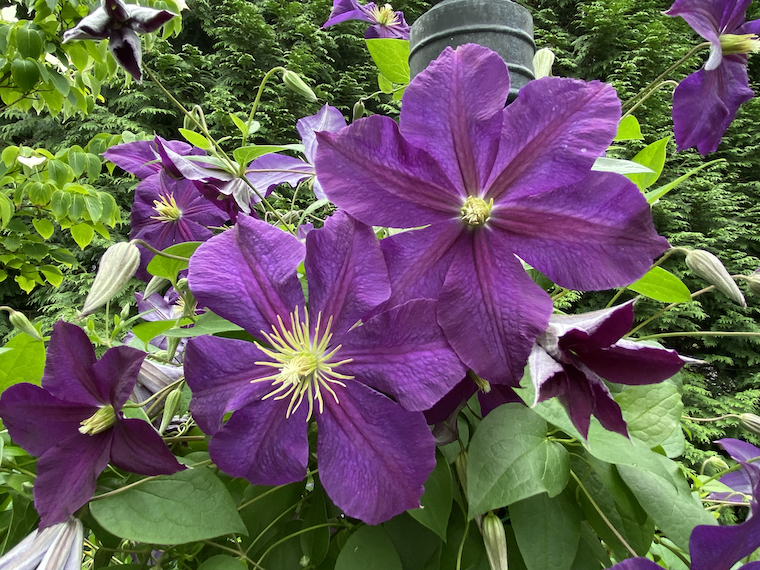Summer is personified by the morning glory – echoes of sky and sunsets may be found in the shading of its blooms, open mostly in the morning and giving name to its fleeting magnificence. Those blooms have been hybridized to encompass all sorts of shades, though my heart will always below to the big, basic sky blue of the common variety. These smaller versions pack a more powerful color-punch, however, so they get much of the glory these days.
I don’t plant them anymore as they tend to be weedy and prolific re-seeders, but I’ll usually let a few get by so we can see what the flowers look like. They also come into bloom when the rest of the garden is beginning its first exhale from the charge of summer, and will see it through to the fall.


